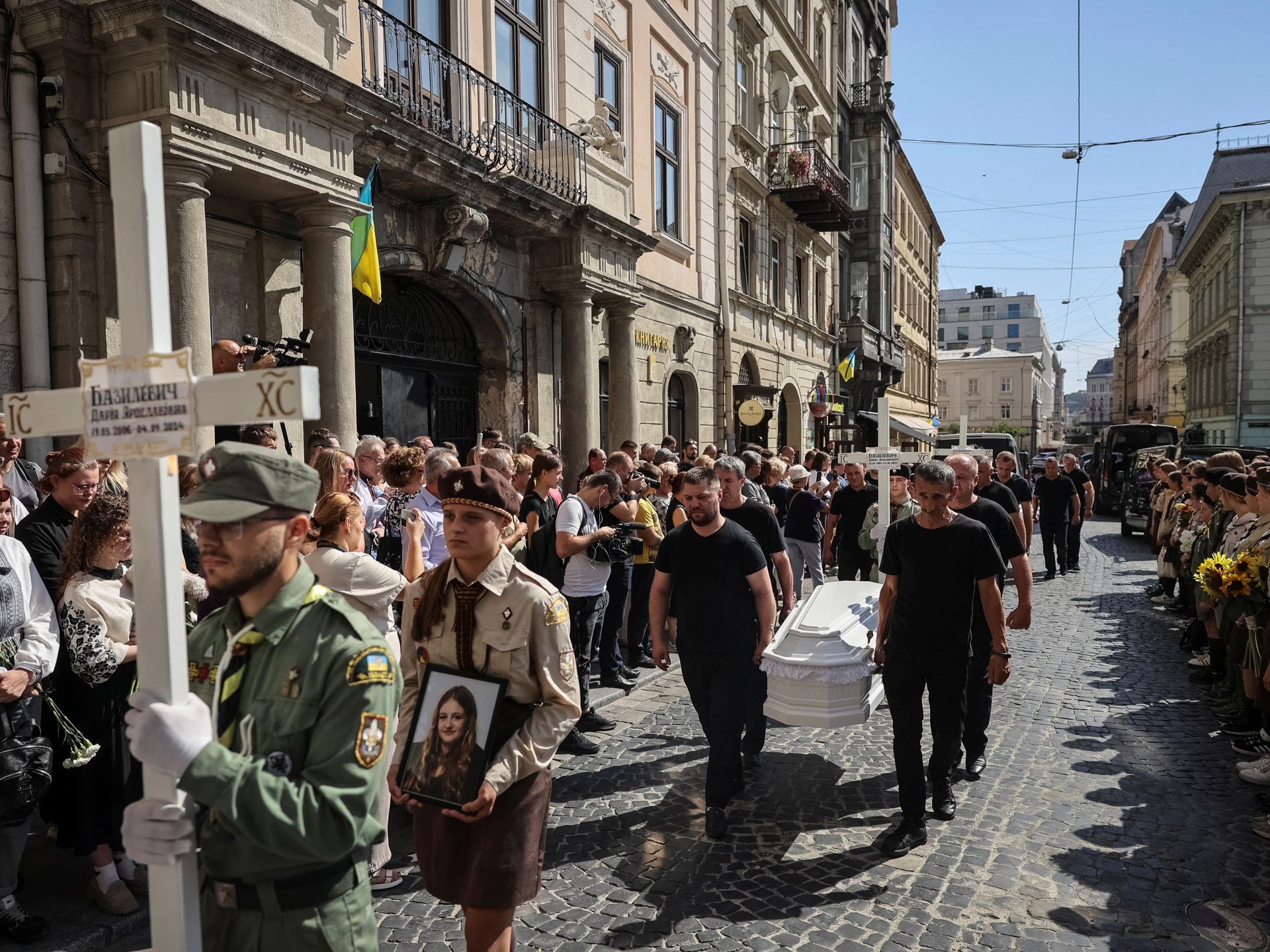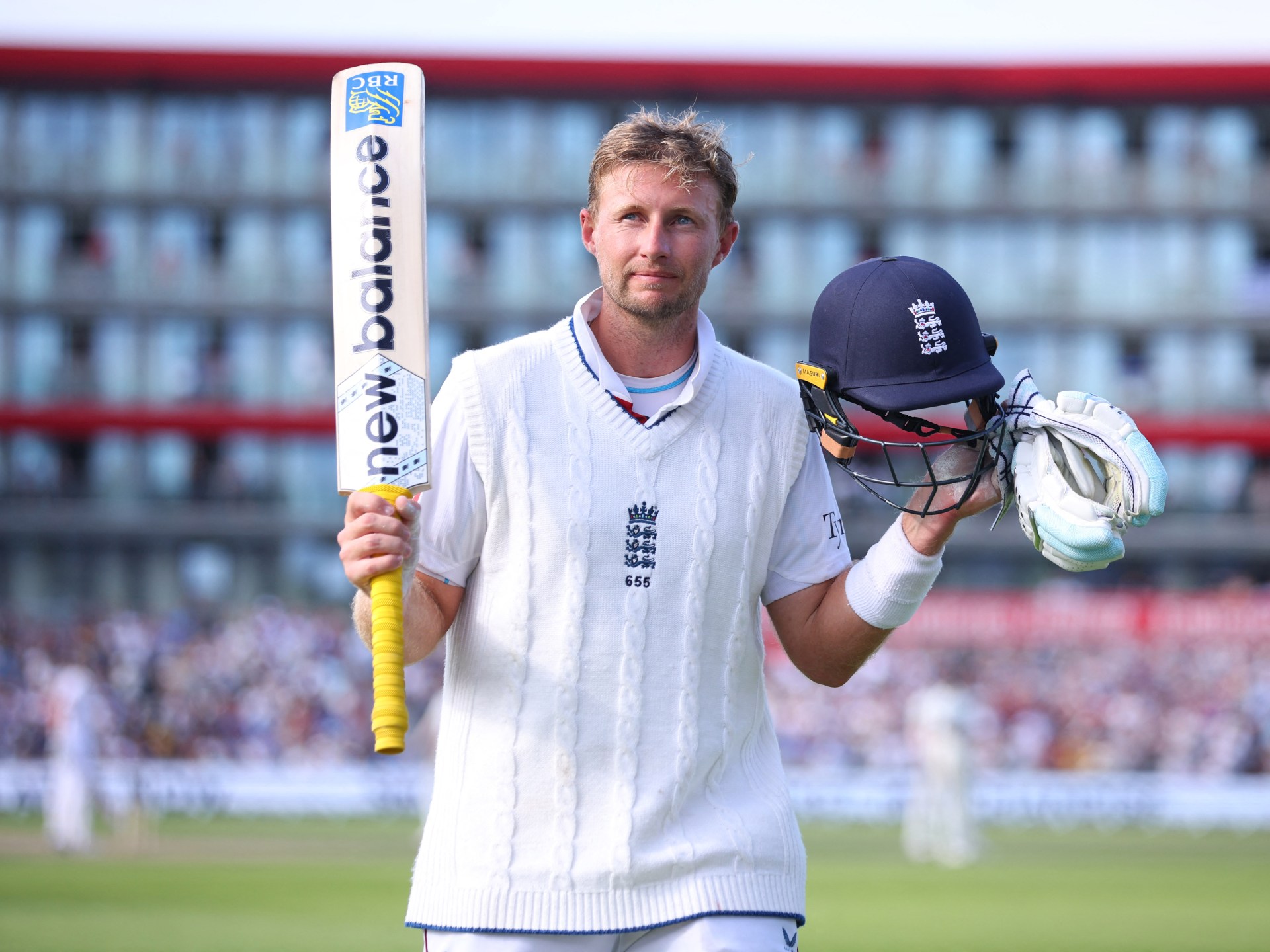
The war in Ukraine, a conflict that continues to expand, has been devastating, with civilian casualties this summer reaching an all-time high since 2022.
Just how many people have been killed in the war since Russia’s full-scale invasion of Ukraine on February 24, 2022?
Here’s what we know:
How many people have died in the war?
Last month, The Wall Street Journal (WSJ), citing intelligence and undisclosed sources, reported a grim milestone: about one million Ukrainians and Russians have been killed or wounded since the war began.
The majority of dead are soldiers on both sides, followed by Ukrainian civilians.
According to government figures, in the first half of 2024, three times as many people died in Ukraine as were born, the WSJ reported.
Experts have long warned of a bleak demographic future for Ukraine.
Population loss is one of the reasons why Ukrainian President Volodymyr Zelenskyy has refused to mobilise men aged 18-25, as most of them have not had children yet, according to Ukrainian officials. The eligible age range for Ukraine’s military is 25 to 60.
How many are civilians?
Statistics vary.
In June, Ukrainian officials said “Russian invaders” had killed more than 12,000 civilians, including 551 children.
The Norwegian Refugee Council (NRC) reported in February that more than 10,200 civilians had been confirmed as killed, with nearly 20,000 injured.
The London-based Action on Armed Violence (AOAV) charity reported that 7,001 people had been killed in Ukraine as of September 23, with more than 20,000 civilians injured.
About 95 percent of civilian casualties occurred in populated areas, with the Donetsk region the most affected, AOAV said.
But these figures are the lowest estimates as the charity solely records “incident-specific casualty figures” reported in English-language media, it added.
Last month, the NRC reported that this summer Ukraine marked its highest three-month civilian casualty total since 2022.
More than 3,200 civilian casualties were recorded in Ukraine between June and August this year – a 33.7 percent increase compared with the same period last year, the NRC said.
The UN Human Rights Monitoring Mission in Ukraine (HRMMU) also documented a sharp increase in civilian deaths and injuries over the summer.
Attacks in government-controlled territory from August 26 to September 6 killed 64 civilians and injured 392 people, it said.
In August alone, 184 civilians were killed and 856 injured, the second-highest monthly casualty figure of the year after July, when at least 219 civilians were killed and 1,018 were injured.
Why did Ukrainian casualties rise in the summer?
Joachim Giaminardi, NRC’s advocacy manager in Ukraine, told Al Jazeera that the conflict has widened.
“We are seeing an expansion of the conflict, both geographically and in terms of the frequency and intensity of the attacks,” Giaminardi said. “The people who are paying the price are civilians.”
Danielle Bell, the head of HRMMU, said in a statement last month that “powerful missiles and bombs have struck populated areas, killing and injuring civilians across the country”.
“Targeted attacks on Ukraine’s electricity infrastructure have again triggered lengthy nationwide power cuts while recent attacks have destroyed or damaged hospitals, schools, supermarkets, and critical energy infrastructure.”
Have Russian civilians been killed?
Yes, but Russia has suffered far fewer civilian deaths than Ukraine.
Russian civilians have been killed in border areas amid fighting.
Moscow has not released an official overall casualty toll.
Media outlets, some linked to the state, occasionally report on civilian deaths.
Last August, The Moscow Times, citing independent news website 7×7, said 80 civilians had been killed since the invasion began.
Two months ago, the Kremlin-aligned outlet TASS reported that 31 people had been killed during Ukraine’s surprise incursion into Kursk.
How many Russian and Ukrainian soldiers have been killed?
The death toll is impossible to verify. More on that later. Let’s start with what has been reported.
More than 71,000 Russian soldiers have been identified and confirmed to have been killed in Ukraine, according to a late-September report by the independent Russian media outlet Mediazona.
Using open source research, Mediazona has been documenting the names of Russian soldiers killed, verifying the information through obituaries, posts by relatives, statements from local authorities and other public reports.
Leaked US documents suggest that more Russian soldiers have been killed than previously estimated.
In July, The Economist reported that between 462,000 and 728,000 Russian soldiers had been killed, injured or captured by mid-June, citing documents by the US Department of Defense.
“Russia’s losses in Ukraine since 2022 dwarf the number of casualties from all its wars since the second world war combined,” The Economist reported, referring to wars in Chechnya, Afghanistan and Ukraine from 2014 until February 2022.
According to Ukraine’s General Staff, as of October 1, more than 654,000 Russian personnel have died.
As for Ukrainian troops, the Russian Ministry of Defence estimates that Kyiv has lost almost half a million men, according to a report published last month by the RT news website.
However, according to Western estimates, some 80,000 Ukrainian soldiers have been killed since February 2022.
In June, Russian President Vladimir Putin told reporters that Ukrainian losses are five times higher than Russia’s, with Kyiv losing at least 50,000 service personnel a month.
Both Russia and Ukraine face manpower woes.
A Ukrainian platoon commander cited by the Reuters news agency estimated that only 60-70 percent of the several thousand men in the brigade at the start of the war were still serving. The rest had been killed, wounded or signed off due to old age or illness.
Why is the death toll so hard to verify?
Marina Miron, a researcher at the Department of War Studies at King’s College London, told Al Jazeera that governments do not publicly report on their casualties to avoid giving the enemy information on how effective their operations have been.
During World War II, for instance, each side underreported their casualties by half and exaggerated enemy casualties by two to three times, she said.
A death is confirmed only once the body has been found, and the concerned defence ministry thereby sends a death notification to the family. But many bodies have not been recovered and are categorised as MIA (missing in action). They could be an army deserter or could have been taken prisoner, Miron said.
If a government does not officially accept a soldier as dead, it manages to evade the obligation to pay the families of the deceased, which has become a problem in Russia and Ukraine, she added.
Casualties among non-state actors, like Russia’s Wagner Group, are not included in available statistics.
What’s next for Ukraine?
Miron told Al Jazeera that she does not see the war as sustainable for Ukraine, which faces numerous problems: a shortage of troops, a struggling economy, and its dependence on Western aid.
“Ukraine does not have an actual strategy, neither does NATO,” she said.
While the Russians operate their equipment, Ukraine does not have enough troops who know how to operate Western weapons systems; training them is time-consuming. Training 20 pilots to operate F-16 fighters took more than a year, she said.
“Russia will have enough resources to go on for a couple [of] years more. Ukraine does not have that time, neither does NATO because NATO itself is facing shortages in air defence systems,” Miron said, adding that Ukraine is not a priority for policymakers as the Middle East crisis worsens.
With Ukraine’s counteroffensive lagging, officials are searching for a diplomatic solution to end the war, one that would include Russia.
“Russia can sustain this [war], but Ukraine cannot,” she said.







